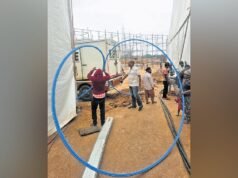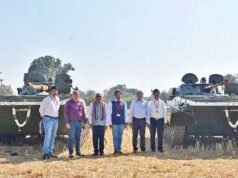
The survey will identify the full tank levels of each water body with accuracy and more importantly help the planning officials to determine if the terrain is a water body or mere stagnant water.
| Photo Credit: SIDDHANT THAKUR
Bathymetric survey, which measures the depth and underwater terrain of water bodies, will be part of the Master Plan exercise by the Hyderabad Metropolitan Development Authority. It will be useful to accurately identify and record lakes and surplus channels, officials say.
A bathymetric survey uses echo-sounding (sonar) devices to record its depth. It will be part of the exercise to create base map for the HMDA region, for which ‘Request for Proposal’ will be published soon.
HMDA officials say the objective is two-fold. Firstly, the survey will identify the full tank levels of each water body with accuracy, by measuring the depth at multiple locations. Secondly, and most importantly, it will help the planning officials to determine if the terrain is a water body or mere stagnant water.
Officials under the condition of anonymity informed that the previous master plan recorded every instance of stagnant water as water body, which led to many complications. Even after the said water body is de-recognised, it continued to stay in the master plan, leading to controversies. A scientific approach through bathymetric survey is expected to identify major water bodies with higher precision. However, the scope of the survey is yet to be decided, they said.
HMDA will prepare base map for its extended purview of 11,500 square kilometres, which includes the areas of Future City Development Authority (762 square kilometres) and also the Yadadri Temple Development Authority (98 square kilometres). FCDA and YTDA will prepare their own master plan, based on the base map provided by HMDA.
The Telangana Core Urban Region (TCUR), largely defined by the area in and around the Outer Ring Road, and the rest of the HMDA constitute 10,450 square kilometres, for which the master plan will be prepared by HMDA.
For the 2,053 square kilometres of TCUR, HMDA is aiming to prepare a three dimensional map through Digital Elevation Model and for the remaining area, a two dimensional map deploying only the Digital Surface Model, as part of the light detection and ranging (LiDAR) survey which may be taken up between December 2025 and June 2026.
Unlike earlier when the base map was prepared using survey numbers, this time round, lat-long coordinates will be used for the job, officials said. Though survey numbers may be superimposed, they will not be the basis for the map.
Published – October 16, 2025 08:39 pm IST






